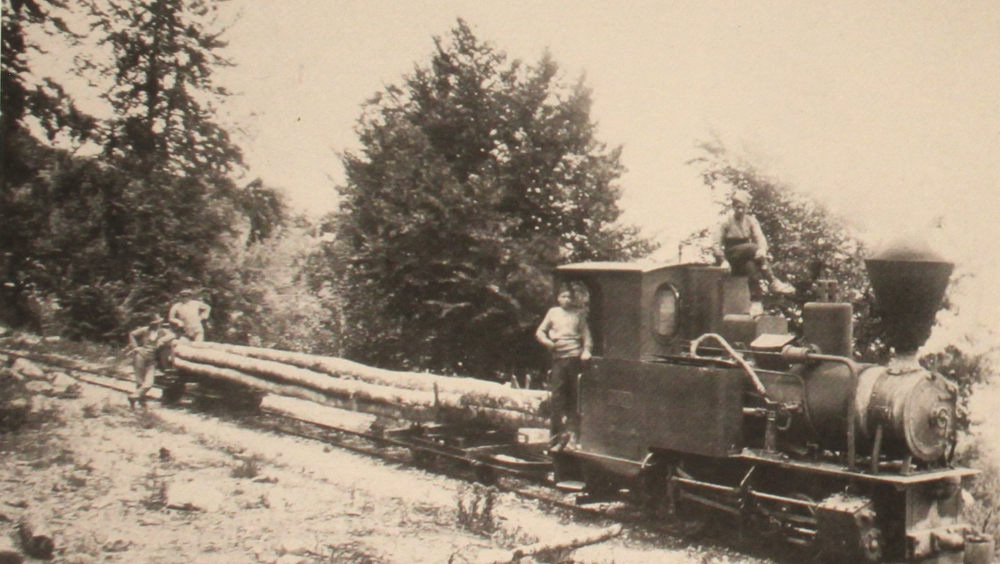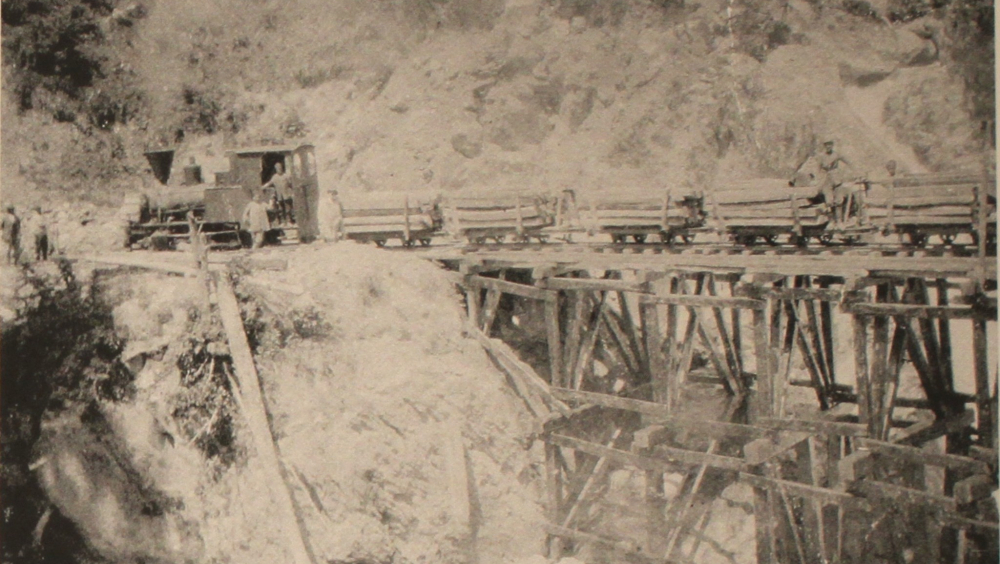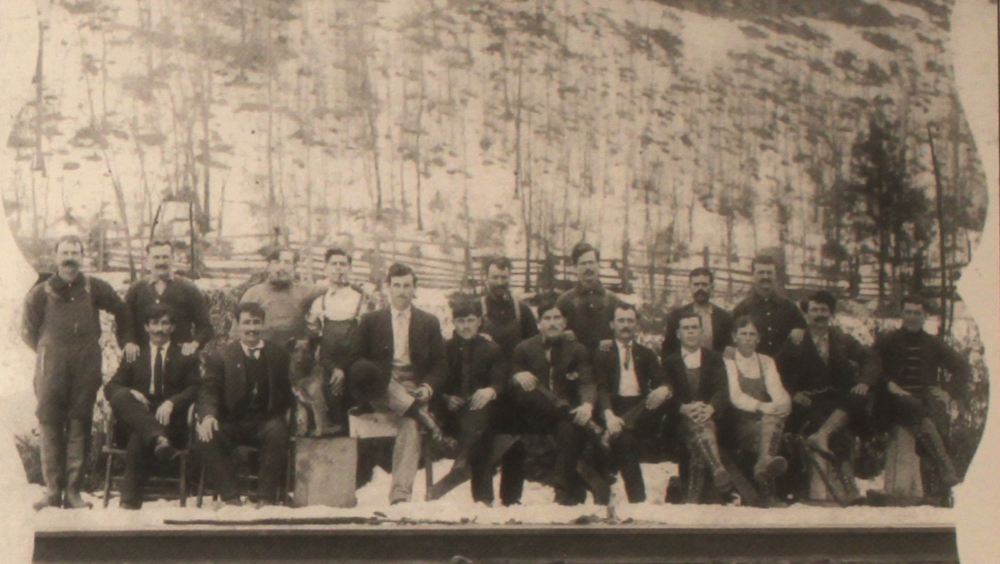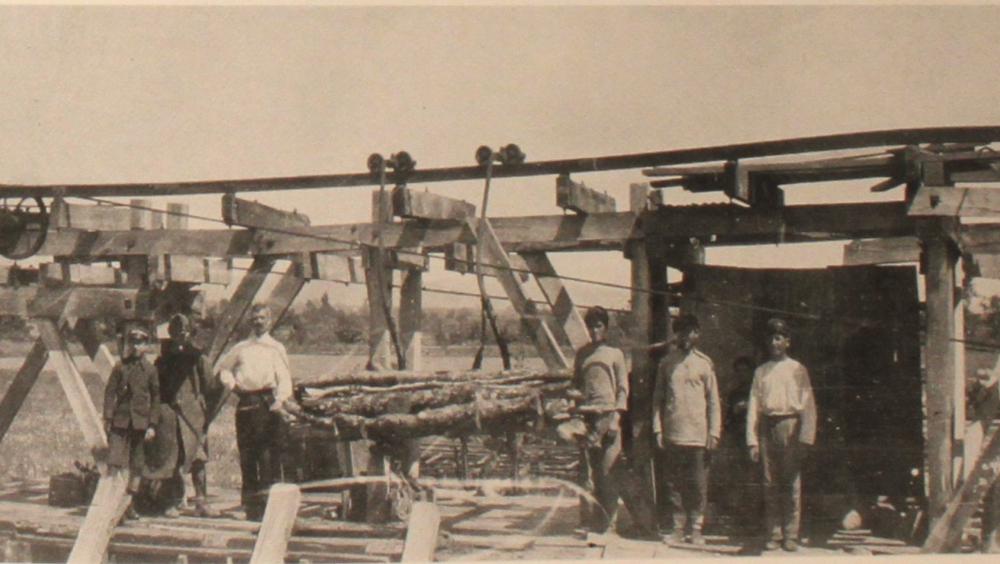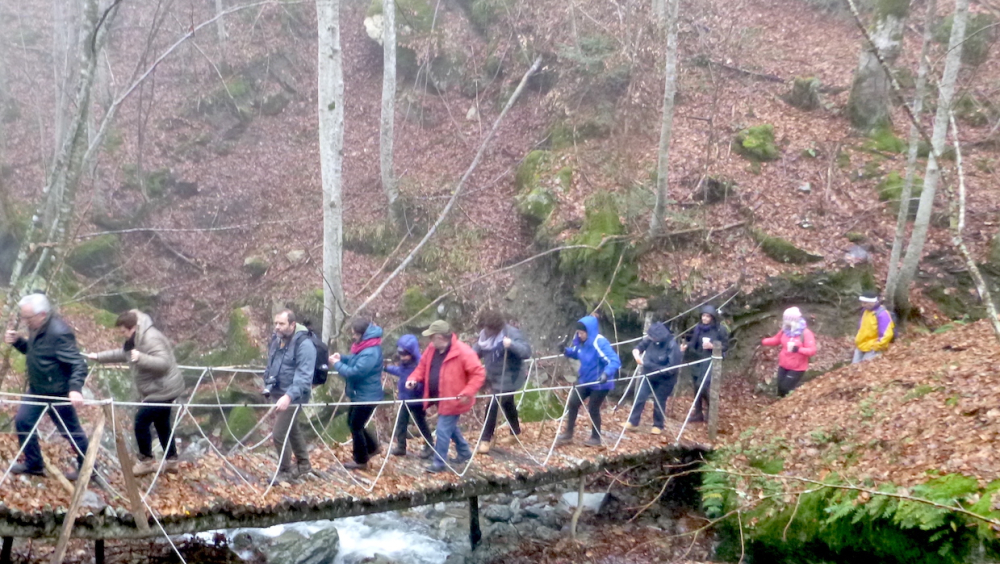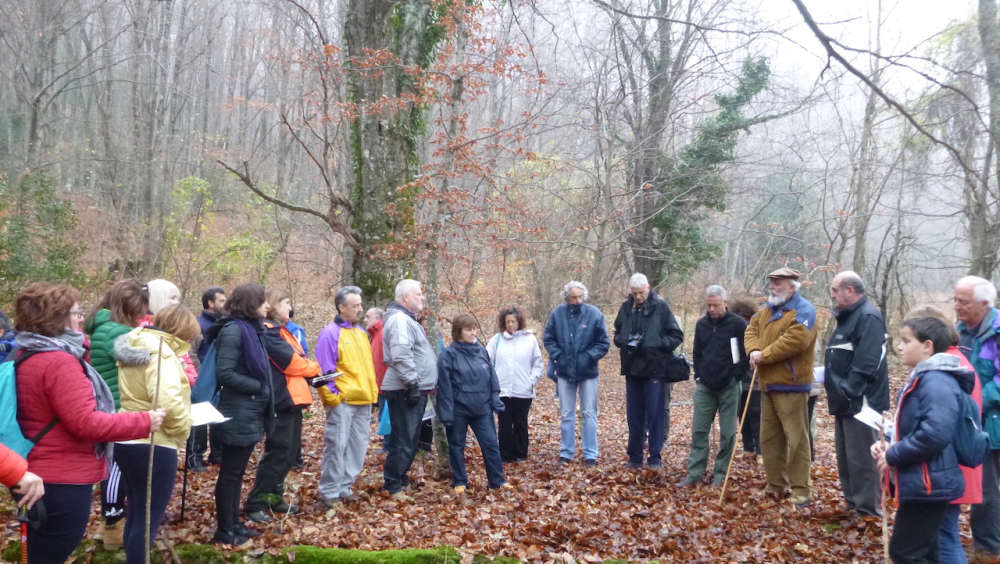Aboard a (long lost) Decauville train through Mount Vermion: tales of war in the enchanting forest
This account tells the story of remembrance and revival, depicting a forest on Mount Vermio that holds the vestiges of a once thriving past. Now, the echoes of momentous events like a world war can only be witnessed through deteriorating ruins. This mountain, characterized by its breathtaking natural beauty, abundant water sources, and historical significance, serves as a connecting force between the municipalities of Naoussa, Edessa, and Eordaia, as well as the prefectures of Imathia, Pella, and Kozani, spanning across the regions of Central and Western Macedonia.
While trekking through the dense beech tree-dominated forest, we encounter remnants of infrastructure projects that once supported business and military operations during the First World War. These projects continue to fuel logging activities in the present day. The forest whispers its secrets to a community of local stakeholders, scientific experts, municipality officials, and engaged members of society who delve into the history of the area. Their focus lies on the traces of the lost Decauville railways that used to traverse the forest, connecting the region with both the East and the West. Exploring the multifaceted civilian, industrial, and military uses of these railways throughout history is their ultimate goal.
Our goal is to create a setting that encourages cooperation between these different factions in order to involve the community, particularly the younger generations, with their heritage on multiple fronts - including historical, cultural, and environmental aspects. By preserving and rejuvenating this forest and the stories it narrates centered around the Decauville route, we aim to create a space where past narratives merge with present endeavors, allowing for a harmonious blend of conservation efforts and exploration of our shared heritage.
Starting from the old timber workshop at the location "Gournosovo", which is 10 km away from the city of Naoussa in Northern Greece (Prefecture of Imathia) and located at an altitude of 1.050m, we embark on a journey of discovery of a half-forgotten past and an almost lost present to sustain a historically, culturally and naturally rich future.
This narrative recounts a tale of recollection and rejuvenation, the story of a forest in mount Vermio which holds the remnants of a once vibrant history, where the echoes of intense moments like a world war can now only be seen as dilapidated ruins. The mountain, which combines great natural beauty, a strong water element and historical interest, unites the municipalities of Naoussa, Edessa and Eordaia, the prefectures of Imathia, Pella and Kozani, the regions of Central and Western Macedonia. On the hike through the dense forest dominated by beech trees, we come across remains of infrastructure projects that supported business and military activity in the past and continue to catalyze the logging of the forest in the present. The forest is whispering to a community of local stakeholders, scientific experts, municipality authorities and informed and active members of the community.
The team is delving into the history of the villages, who have experienced destruction on multiple occasions, and the surrounding mountainous area, aiming to bring back to life a once vibrant region with a thriving industrial presence that has now been lost. They plan to achieve this through a different approach, by creating a sustainable route that respects the area's history, myths and natural surroundings. The purpose of this pathway is to educate upcoming generations about the challenges faced in the past, transforming the region into a culturally vibrant place where the formation of a collective bond through shared memories and histories is possible.
During the years of the First World War and especially during the three years 1916-1917 and 1918, in this mountainous operation all the unruly soldiers from Naoussa with royal attitudes found work and shelter. At the end of First World War, the Greek government with the allied forces of the “Triple Entente” legalized the working time of the insubordinates, considering it as part of the military service. The justification given was that the produced forest products (sleepers) were being used by the Allies for the installation of railway lines in the Middle East. The route started from the old factory - mill - which operated at the beginning of the last century (1914 - 1921) at a distance of more than 20 kilometers on the path that 100 years ago was paved with rails, on which a Decauville train “struggled" transporting massive tree trunks from many places in mount Vermio to the water-steam powered sawmill, which turned the logs into sawn timber.
From Gournosovo also started the aerial train (i.e. aerial transport with a cable) which descended, transporting the sawn timber to the Lefkadian rundies near the railway line, where they were loaded onto wagons bound for the port of Thessaloniki. Then the processed timber (mostly sleepers for railway lines) was transported by ship to the Middle East, where it was used for the construction of railway lines in Arab countries. The business operated profitably for the period between 1916 and 1921.
Many comparable mountainous regions in northern Greece feature railway constructions like these. By exploring Naoussa's old railway lines, we can discover an extensive network of similar installations that showcase the interconnections between economies, cultures, and individuals.
We walk through a gallery, pass over stone bridges that spanned the Vermian rivers and faced the stone retaining walls that protected the railway line. Arriving at the "pedestals" area and facing the waterfall of the largest river of Vermion, which originates from the springs "Karaburnari", we encounter the logistics area of the rebels of the 16th ELAS (Hellenic People's Army of Liberation in WWII) regiment (kitchen, tailors, etc.), who resisted the occupying forces during the occupation of Greece by the Germans. The long bridge that connected the two sides of the river was destroyed by the German forces in April 1944. Remains of the construction are visible.
Continuing our journey and walking on the same route as the old line of the train, we come across, on the other side of the river, the one-room church of the Transfiguration of Jesus. There, a built-in marble inscription names the industrialist Kyrtsis, born in the neighboring abandoned village of Perisori, founder of the small church in 1925. In 1921 the English businessmen (Millars Timber and Trading Company Ltd) deemed the operation of the business unprofitable and stopped it and as there was no local continuity for the business, they took what could be transported from the premises and left the mountain. From the remains of the installation, parts of the railway lines were used as poles for the electrification of Naoussa in the interwar years.
At a distance of about three kilometers from the small church of Metamorfosi there was the village of Drazilovo which was destroyed together with the neighboring villages of Koutsoufliani and Perisori in 1822, with the destruction of Naoussa. Today the village is called Metamorfosi and is inhabited by refugees from Pontus (a region on the southern coast of the Black Sea), who settled there in 1924. But once again, cruel fate led the refugee villages of Koutsoufliani (note Agios Pavlos) and Drazilovo (note Metamorfosi) to their ruin for the second time and in the execution of 11 residents of the small settlement of Koutsoufliani by the occupying forces and their Greek collaborators, on April 25, 1944.
The team sets out on a voyage through the woodland, examining the remnants and piecing together the narrative of the region until they uncover the past of their homeland. Reflecting on its history, nature and culture, directing our focus towards the future, they are tracing the remains in a quest to make peace with history and create a new path forward, with the objective to rephrase the given text into an original and fresh content. The traces of the Decauville train on the slopes of Vermio are today followed by unsuspecting walkers and visitors who learn a piece of its history from the large wooden sign located next to the Metamorphosis waterfall. A little further, visitors pass through the gallery that had been opened in the mountain for the train to reach Gournosovo. The route to the waterfall of Metamorphosis, the small church and the pedestals with the fresh water is today only possible on foot.
Focusing on mountain development, we plan to establish a system of pathways, marking historical routes and landmarks, and creating themed walks. The region has the potential for development even with the partial restoration of the "Decauville" train which could offer a breathtaking educative and recreational route and scenery into the woods of mount Vermio.
The Ephorate of Antiquities of Imathia, in collaboration with the Municipality of Naoussa, is making efforts to rekindle the enthusiasm of the local community in actively participating in the exploration of the region's war memories starting from the Decauville train and following its trail throughout the local history. Their aim is to educate the younger generations about the natural, historical, and cultural facets of the area, as well as to preserve and promote its rich history, nature, and culture as it developed throughout the 20th century in the dense woods of Mount Vermio. In partnership with experts in various fields such as folklore, anthropology, agriculture, history, and forestry, we organize and conduct guided tours that integrate cultural heritage, history, mythology, and specific elements of the natural surroundings of mount Vermio.
Our team is preparing to host a large-scale gathering including a presentation of the area by experts and informed members of the local community, showcasing its cultural, historical, and natural aspects. The event will also feature an exhibition of archive photographs sourced from local researchers and photos taken / owned by community members. Furthermore, we aim to film a short documentary which will be created collectively through the Korsakow system (an opensource software tool for digital nonlinear flexible storytelling - http://korsakow.com/) where members of the community are encouraged to create short filmed narrative units drawing inspiration from the region's natural wonders and its rich material and intangible heritage with the joined scope to form a larger collective and interactive storytelling published on a digital platform.
Our main goal is to explore and present a network of historical rail routes used by Decauville trains throughout Greece, starting with the local story of the Decauville in Mount Vermio. Through research, we aim to uncover the uses and histories of these industrial railways across Europe and revive the stories they hold. By doing so, we seek to create a culture that values and promotes the shared memories and histories connected to the paths of the Decauville trains, highlighting the interconnected history of Greece and Europe during wartime, and shedding light on the lasting impact of war. This endeavor will involve delving into shared historical experiences, collective memories, oral traditions, and the field of industrial archaeology. Our objective is to gather accounts from the nearby community about the events that took place during the First and Second World Wars, as well as the following years. We aim to empower local communities by enabling them to discover and connect with the history of their region. Through reminiscing about the past, we hope to cultivate a strong sense of appreciation of our shared European space. We place great emphasis on the significance of preserving our shared local and European history and protecting our environment, as they serve as enduring testaments to the past and present, providing valuable knowledge for the younger and future generations. This commitment ensures a sustainable and harmonious future that can be enjoyed by all.
